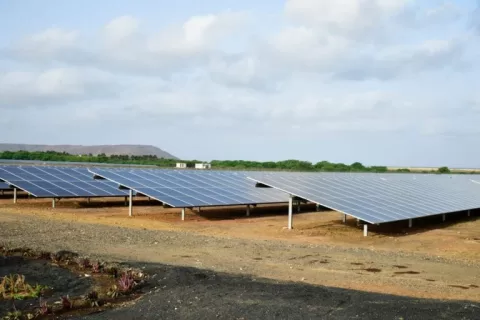Largest solar power plant in cape Verde on Sal Island was inaugurated by Cape Verde’s Ministry of Energy and Commerce that will help the country to save energy. This is true given that Aguas de Ponta Preta developed a 5 MW solar plant in Santa Maria that is quite significant to the country’s renewable energy plan. This project is in line with Cape Verde’s national policy to diversify its energy sources, establish a more stable energy source and minimize its vulnerability to fluctuations in the international energy market.
Project factsheet
Constructor: Aguas de Ponta Preta.
Location: Santa Maria on the island of Sal.
Completion date: September 2024.
Significance: The project supports Cape Verde’s efforts to lower carbon emissions, a critical issue for an island nation vulnerable to climate change.
For more than 30% of electricity generation, Cape Verde has targeted it for the year 2026 while for more than 50% has set a target for the year 2030. The solar plant in Santa Maria is likely to help the country towards achieving this target. The new plant will also address the challenge of reducing carbon emissions an important factor for an island nation that is sensitive to the effects of climate change.

This is why the completion of the solar installation also highlights Cape Verde’s desire to strengthen its renewable energy capacity. Tourism is among the leading sectors in many countries, meaning that it is vital for energy consumption not to lead to carbon footprints. The shift to the use of renewable energy will also assist in the promotion of sustainable development and other related aspects for the attraction of more tourists with a preference for environment friendly products.
Scope
Furthermore, the plant is also contributing to the government and international organizations’ continued endeavours to develop a stronger and more independent electricity system. Energy is an important issue that has been of concern in Cape Verde due to its small size and has had to import most of its energy needs in form of fossil fuels which are characterised by price fluctuations in the global market. Unlike such vulnerabilities, this solar project will also help to address energy costs that consumers are likely to incur in the long run.
These renewable energy projects in Cape Verde, including this solar power plant, demonstrate that small countries can fight climate change and energy dependency, as well as stimulate their economy. Based on the future expansion of other renewable energy projects in the island the government aims to provide a good example for other small island developing states with the similar problems in environmental and economic sectors.
The new solar plant will make Cape Verde one of the leading nations in the use of renewable energy within the region thus laying the foundation for what could be a more sustainable form of energy besides the traditional dependence on fossils.
Read also Mtentu Bridge: Africa’s Tallest and Longest Cantilever Bridge
Read also Africa’s largest gas-to-methanol plant construction in Nigeria
